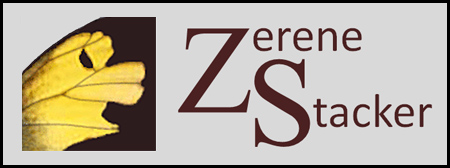Table of Contents
Calibrating Backlash For Your StackShot Rail
Due to manufacturing tolerances, the leadscrew and the carriage nut on the StackShot rail do not fit together perfectly. As a result, when the screw reverses direction, it must turn a small distance before the carriage actually moves. This slack or lost motion, called “backlash”, typically corresponds to about 0.1 to 0.2 mm of carriage movement. The StackShot controller knows how to correct for backlash, but because it cannot directly observe the carriage movement, you have to tell it what amount of backlash your particular rail has.
There are two good ways to set the backlash value. Both of them start by putting on your highest magnification, thinnest DOF optics, mounting up a subject that has clear detail, and observing focus either through the viewfinder or via LiveView.
Method A -- the "rocking focus knob" test.
- Set some reasonable guess for proper backlash, say 0.15 mm.
- Back off a mm or two, then advance forward until some distinct feature of the subject is well focused.
- Rock the fine focus knob a small amount back and forth, while observing what happens. As you rock the knob back and forth, you will hear the leadscrew move quite a ways forward and backwards, corresponding to whatever distance is set as backlash. (For example, if backlash = 0.15 mm, then the leadscrew will rotate about 1/10 of a full turn to take up the backlash.) If the backlash is set too high, then each reversal of the fine focus knob will cause an obvious jump in focus as the leadscrew takes up the slack but then overshoots. If the backlash is set too small, then each reversal of the fine focus knob will cause no change in focus, or perhaps just a tiny amount as contact between the screw and the nut is made and broken. When the backlash is set just right, you will be able to adjust focus backward and forward almost as if you were running the fine focus knob of a microscope, with no overshoots or “dead zone” on reversal.
- Adjust backlash larger or smaller based on the results of step 3.
- Repeat steps 3 and 4 until no further improvement can be made.
Method B -- the "direct measurement" approach.
- Set backlash = 0 in the Configuration panel of the ZS StackShot interface. Do not forget this step!
- Back off a mm or two, then advance forward until some distinct feature of the subject is well focused.
- Write down the nominal position of the rail, as indicated in the upper left corner of the Common Controls panel of the ZS StackShot interface.
- Repeatedly tweak the Back button until you observe focus just starting to move consistently backward.
Focus may shift slightly as soon as pressure starts to be taken off the screw, but if it then stops shifting, that's not the point that you're looking for. You want the point where focus shifts significantly every time you tweak the Back button. - Write down the new nominal position of the rail, again as indicated in the upper left corner of the Common Controls panel.
- The proper backlash value can now be computed as the difference between the two nominal positions of the rail.
Method A is generally more accurate and corresponds directly to having the fine focus knob work well. However, method B should get you a good starting value pretty quickly, and going through both processes will help develop a good intuition for what's going on with the hardware.
